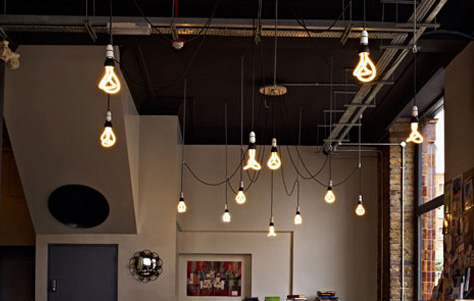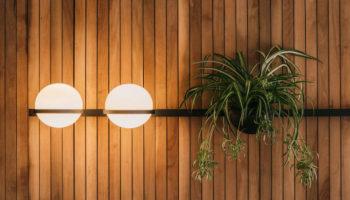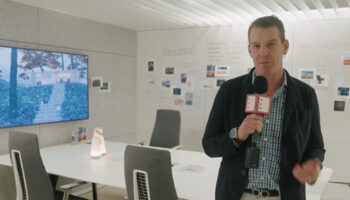Plumen: Low-Energy Lighting by Hulger
In the city that never sleeps, low-energy light bulbs are an undoubtedly good thing for the environment. They save electricity and last longer than the traditional incandescent bulb, which cuts back on waste from replacing bulbs as well as reducing energy usage. In terms of appearance, low-energy bulbs are acceptable but perhaps a little dull. The London design brand Hulger is attempting to change that with the launch of Plumen, a low-energy light bulb that makes a statement with its sculptural tubes.
Plumen. Designed by Hulger.
“Despite there being an abundance of CFL producers, we see only three basic bulb formats available: The Radiator, The Ice Cream Whip and the Tungsten-esc types. Each style is uniform in shape, with no variation, tension or interest. It seems strange that the bulb, an object so synonymous with ideas, is almost entirely absent of imagination.”
– Nicolas Roope, Hulger co-founder and creative director



Hulger describes Plumen as “the world’s first designer low-energy light bulb”. The bulbs push the limits of creativity within the confines of bulb technology by turning the standard consistently shaped tubes into a sculpture of light. Plumen bulbs use 80% less electricity than incandescent bulbs, and last eight times longer. Hulger will also help consumers recycle Plumen bulbs at the end of their life by accepting used bulbs via mail. Low-energy light bulbs contain small traces of mercury, which is not dangerous in the dose one bulb can provide, but should not be thrown into the waste bin with your dirty napkins.
Plumen is striving to encourage the use of low-energy bulbs by making them more desirable. Hulger believes the low-energy bulb has been neglected thus far, hence the name Plumen, which comes from ‘plume’ – the bird’s decorative feather, designed to attract attention to its’ prowess and beauty. The first Plumen concept design was released in 2007, and joined the very prestigious permanent collection at MoMA (Museum of Modern Art) in New York, and was more recently featured at the Victoria and Albert museum in London.
via Dezeen




Leave a Reply